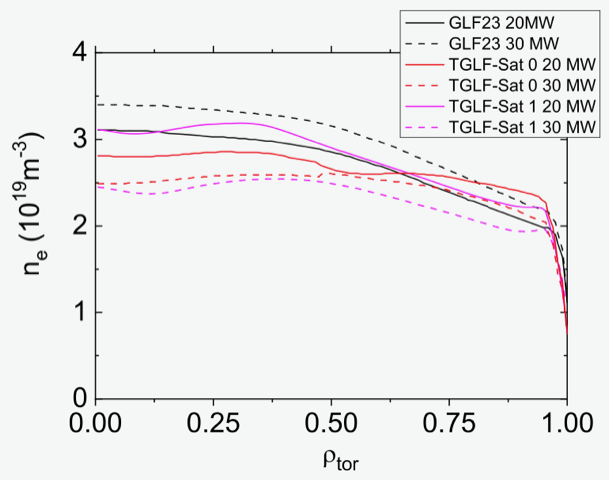H-mode plasmas in the pre-fusion power operation 1 phase of the ITER research plan
Loarte A.; Polevoi A.R.; Schneider M.; Pinches S.D.; Fable E.; Militello Asp E.; Baranov Y.; Casson F.; Corrigan G.; Garzotti L.; Harting D.; Knight P.; Koechl F.; Parail V.; Farina D.; Figini L.; Nordman H.; Strand P.; Sartori R.
The optimum conditions for access to and sustainment of H-mode plasmas and their expected plasma parameters in the pre-fusion power operation 1 (PFPO-1) phase of the ITER research plan, where the additional plasma heating will be provided by 20 MW of electron cyclotron heating, are assessed in order to identify key open R&D issues. The assessment is performed on the basis of empirical and physics-based scalings derived from present experiments and integrated modelling of these plasmas including a range of first-principle transport models for the core plasma. The predictions of the integrated modelling of ITER H-mode plasmas are compared with ITER-relevant experiments carried out at JET (low-collisionality high-current H modes) and ASDEX Upgrade (significant electron heating) for both global H-mode properties and scale lengths of density and temperature profiles finding reasonable agreement. Specific integration issues of the PFPO-1 H-mode plasma scenarios are discussed taking into account the impact of the specificities of the ITER tokamak design (level of ripple, etc).
| ID | 460679 |
|---|---|
| DOI | 10.1088/1741-4326/abfb13 |
| PRODUCT TYPE | Journal Article |
| LAST UPDATE | 2022-04-11 |
| EU PROJECT | EUROfusion |
|---|---|
| TITLE | Implementation of activities described in the Roadmap to Fusion during Horizon 2020 through a Joint programme of the members of the EUROfusion consortium |
| FOUNDING PROGRAM | H2020 |

 English
English  Italiano
Italiano 